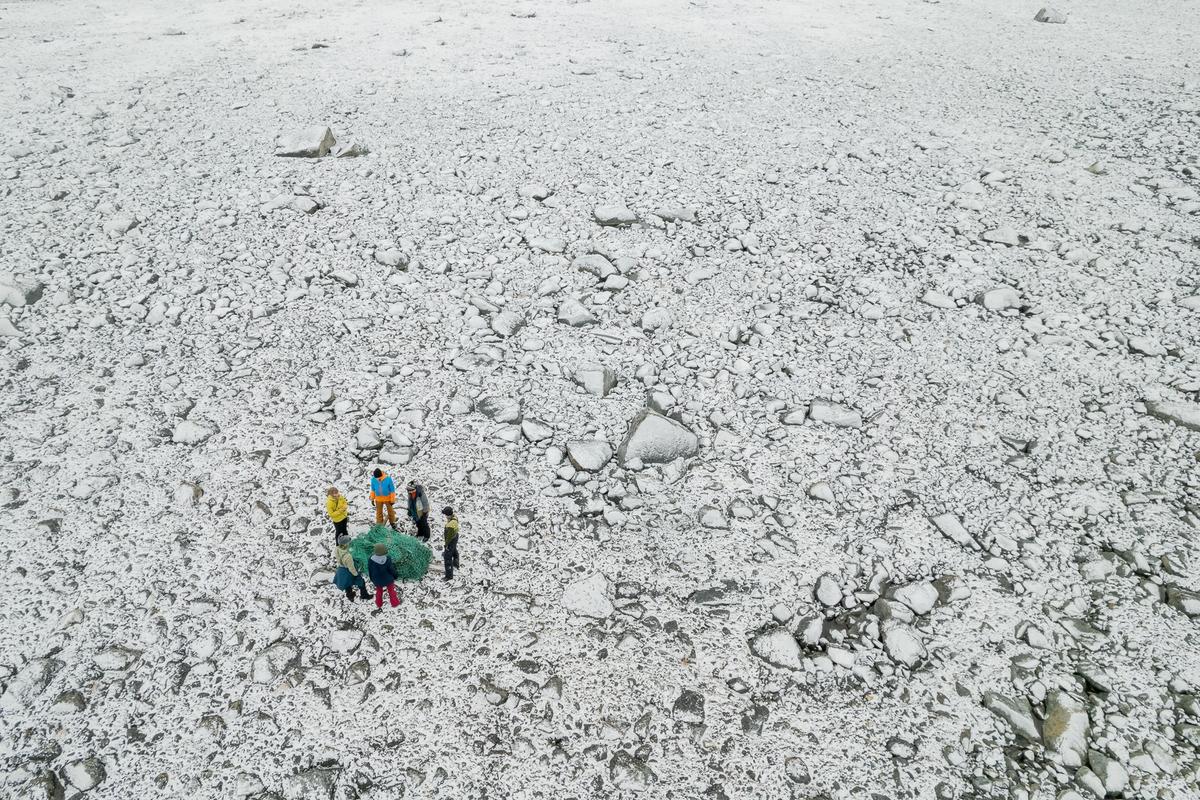Pieces of rope, cut-offs and small pieces of plastic from the users of the sea are a serious litter issue in the Arctic.
Although the population density is low in the Arctic, there are high levels of activity in the maritime areas. Fisheries, shipping, tourism and the oil industry are very much present in the north and activity levels are expected to increase.
Although the data on litter in the Arctic needs to be strengthened, the existing knowledge platform is clear: ropes, cut-offs, longlines, fishing lines and strapping are frequently recorded in the Arctic.
Several individual studies and in-depth analyses have therefore concluded that one of the major sources of macroplastics in the Arctic is the maritime industries and sea users. One industry in particular stands out – fisheries.

Causes of the large volumes of rope, cut-offs and small pieces of plastic in the Arctic
Wear and tear of gear and cut-offs from work on board fishing vessels are among the main causes of large pieces of plastic ending up in the Arctic. The causes of this are as follows:
- Bad weather
- Time pressure
- Lack of waste management procedures on board
- Lack of waste disposal opportunities at port
- Poor attitudes, combined with a lack of knowledge of marine litter and the consequences it has for the sea

Overview of findings from the Arctic:
- Studies from Norway show that cut-offs and pieces of rope account for a large proportion of litter in terms of quantity and, on some beaches, weight. The proportion of fishing-related litter is higher on exposed coastlines and more dominant in the north.
- Litter cleared and analysed on Svalbard has many similarities to waste found in northern Norway. Fishing-related litter constitutes the greatest source of marine litter on Svalbard in terms of quantity and weight (Falk-Andersson et al., 2019).
- Litter data from the Arctic coast of Norway towards the Barents Sea and on Svalbard and Novaya Zemlya shows that rope is one of the most commonly found items, especially ropes that have been cut at both ends. The proportion of sea-based litter was 86 per cent in Finnmark, 63 per cent on Novaya Zemlya, 41 per cent on eastern Svalbard and 21 per cent on western Svalbard.
- The second most commonly recorded items on 23 beaches in Alaska in 2017 were rope and nets.
- The type of litter most commonly observed in connection with beach surveys along the coast of Labrador and West Greenland was longlines and fishing lines.
- OSPAR monitors the beaches in the North-Eastern Atlantic. Records show that the most typical type of litter is rope and the trend is increasing.
- The largest source of marine litter in Iceland is sea-based.

The Arctic Council’s action plan to combat marine litter, adopted in 2021, emphasises the importance of reducing marine litter originating from the fishing industry.
The action plan contains a total of 11 measures to prevent and reduce marine litter in the Arctic, in which best practices for waste management on board fishing vessels are crucial. A prerequisite for success is to ensure that there are well-functioning waste management schemes available at port.

⚓Everyone who uses the sea can help to reduce the amount of rope pieces, cut-offs and small plastic pieces that go astray⚓
Prevention is crucial to reducing plastic in the Arctic, as only a small proportion of the plastic that ends up in the sea can be cleared. In the Arctic, the large distances mean that clean-up operations are cost-intensive and substantial efforts are required to clear the existing litter along the coast.
The plastic that ends up on the beaches is plastic that has good buoyancy. Rope pieces and cut-offs are made of plastic that does not have good buoyancy.
Plastic that has poor buoyancy sinks to the bottom and remains in the sea. The knowledge we have of such plastic originates from registrations of lost fishing gear and seabed surveys, as well as certain research projects. In Norway, fishing gear that is reported lost is cleared annually, but more knowledge is needed to establish how much already exists on the seabed as we know that plastic degrades more slowly and can remain there for a long period of time. This can be up to 600 years for materials such as nylon.


